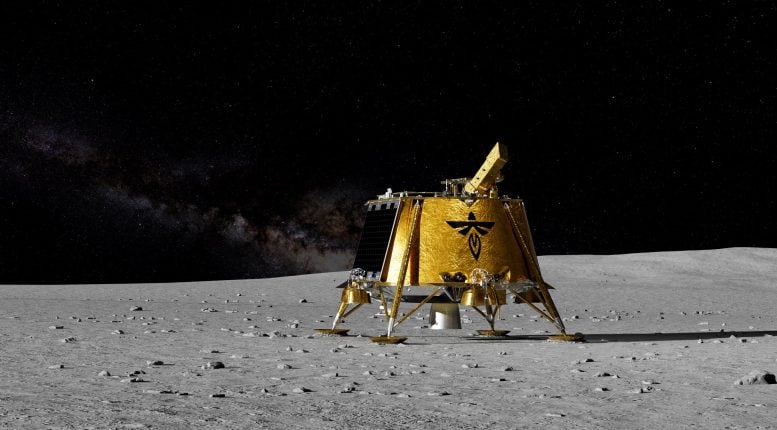Temperatures are forecast to reach 46.5°C or 115.8°F in Saudi Arabia (green circle left) and to reach 36.1°C or 96.9°F in China (green circle right) on August 4, 2024 06 UTC.

As illustrated by the image below, ‘feels like’ temperatures are forecast to reach 42.1°C or 107.9°F in Saudi Arabia (green circle left) and 53.6°C or 128.4°F at that location in China (green circle right), i.e. at Gaoyou, Yangzhou, Jiangsu, China, 325 km North of Shanghai, China, on August 4, 2024 06 UTC.

What makes the difference is that the ‘feels like’ temperature is the perceived air temperature as a combination of the heat index and wind chill. The heat index combines air temperature and relative humidity, in shaded areas. Relative humidity is forecast to be 7% in Saudi Arabia at the green circle left and 69% in China at the green circle right on August 4, 2024 06 UTC, as illustrated by the image below.

The image below shows an even higher ‘feels like’ temperature of 55°C (130.9°F) that was recorded at a location 368 km north of Shanghai, China, on August 4, 2024, 09 UTC, caused by a combination of a temperature of 35.5°C (95.8°F) and a relative humidity of 75%, also resulting in a wet bulb temperature of 31.4°C (88.4°F). The image was made with a screenshot of current conditions (nowcast) at the time, but later readings show lower values (see image further below).

In hindsight, the highest ‘feels like’ temperature turned out to be 53.6°C (128.6°F), recorded at a location 361 km north of Shanghai, China, on August 4, 2024, 09 UTC, caused by a combination of a temperature of 35.6°C (96.2°F) and a relative humidity of 72%, also resulting in a wet bulb temperature of 31°C (87.7°F), as illustrated by the image below.

The above image also shows wind at surface level, with a large circular wind pattern showing up south of Japan, which may have influenced conditions.
High Wet Bulb Globe Temperature in California
Wet Bulb Globe Temperature takes into account the effect of temperature, relative humidity, wind speed, and solar radiation. Wet Bulb Globe Temperature is used by weather.gov to warn about extreme heat stress when in direct sunlight, as is forecast to occur in California in the grey areas on August 6, 2024 at 21 UTC.
 |
| [ click on images to enlarge ] |
The above image shows that a very high wet bulb global temperature is forecast for August 6, 2024, 21 UTC, at a location 7 miles west of Imperial, California, with the following details (inset):
– Temperature : 113°F or 45°C
– Apparent Temperature : 123°F or 51°C
– Wet Bulb Globe Temperature : 97°F or 36°C
– Dew Point : 69°F or 21°C
– Relative Humidity : 25%
Heat stress fatalities
Heat stress is the leading cause of weather-related deaths in the United States, as illustrated by the image below (credit: NOAA, text below from earlier post).

As the above image notes, the values for heat fatalities may be conservative. Research finds that where heat is being listed as an official cause of death, this likely underestimates the full toll of these events. Extreme heat can trigger heart attacks and strokes. In addition, some heart disease risk factors, such as diabetes—as well as heart medications, such as diuretics and beta blockers—can affect a person’s ability to regulate their body temperature and make it difficult to handle extreme heat. The study finds that extreme heat accounted for about 600-700 additional deaths from cardiovascular disease annually. A study estimates that extreme heat accounted for 12,000 premature deaths in the contiguous U.S. from 2000 to 2010, and an analysis calculates that the summer 2022 heatwave killed 61,000 people in Europe alone.
Temperature thresholds
As temperatures and humidity levels keep rising, a tipping point can be reached where the wind factor no longer matters, in the sense that wind can no longer provide cooling. The human body can cool itself by sweating, which has a physiological limit that was long described as a 35°C wet-bulb temperature. Once the wet-bulb temperature reaches 35°C, one can no longer lose heat by perspiration, even in strong wind, but instead one will start gaining heat from the air beyond a wet-bulb temperature of 35°C.
Accordingly, a 35°C wet-bulb temperature (equal to 95°F at 100% humidity or 115°F at 50% humidity) was long seen as the theoretical limit, the maximum a human could endure.
A 2020 study (by Raymond et al.) warns that this limit could be regularly exceeded with a temperature rise of less than 2.5°C (compared to pre-industrial). A 2018 study (by Strona & Bradshaw) indicates that most life on Earth will disappear with a 5°C rise. Humans, who depend for their survival on many other species, will likely go extinct with a 3°C rise, as illustrated by the image below, from an earlier post.

A 2022 study (by Vecellio et al.) finds that the actual limit is lower — about 31°C wet-bulb or 87°F at 100% humidity — even for young, healthy subjects. The temperature for older populations, who are more vulnerable to heat, is likely even lower. In practice the limit will typically be lower and depending on circumstances could be as low as a wet-bulb temperature of 25°C.
Wildlife, pets, livestock and vegetation also suffer at higher temperatures. A recent study finds thresholds where vegetation productivity experiences rapid suppression, with threshold crossings occurring first of all in tropical regions. The study adds that restricting global warming to just 1.5°C can increase safe areas for vegetation growth by 13% compared to allowing warming to reach 2°C above preindustrial levels. Crop failure, loss of vegetation (and benefits such as shade) and water shortages add to the predicament of high (and rising) temperatures.
Water vapor feedback
The February 2024 temperature was 1.76°C above 1885-1915, which could be as much as 2.75°C above the pre-industrial temperature. A 2.75°C rise corresponds with almost ⅕ more water vapor in the atmosphere.
As illustrated by the image below, created with NOAA data, surface precipitable water reached a record high of 27.395 kg/m² in July 2024.

Climate change danger assessment
The image below, earlier discussed here, expands risk assessment beyond its typical definition as the product of the severity of impact and probability of occurrence, by adding a third dimension: timescale, in particular imminence.

Imminence alone could make that the danger constituted by rising temperatures needs to be acted upon immediately, comprehensively and effectively. While questions may remain regarding probability, severity and timescale of the dangers associated with climate change, the precautionary principle should prevail and this should prompt for action, i.e. comprehensive and effective action to reduce damage and improve the situation is imperative and must be taken as soon as possible.
Rapidly rising temperatures constitute tipping points in several ways
Firstly, there are thresholds beyond which rising temperatures become lethal for humans, as discussed above.
Secondly, some species are more vulnerable than other species. As Gerardo Ceballos describes in a 2017 analysis, there is a biological tipping point that threatens annihilation of species via the ongoing sixth mass extinction. Researchers such as Gerardo Ceballos (2020), Kevin Burke (2018) and Ignation Quintero (2013) have for years warned that mammals and vertebrates cannot keep up with the rapid rise in temperature. Humans are classified as vertebrate mammals, indicating that we will not avoid the fate of extinction, Guy McPherson (2020) adds.
High methane levels over Arctic Ocean
Humans will likely go extinct with a 3°C rise and one of the most-dreaded feedbacks that could contribute to such a rise is methane. Ominously, high methane levels are forecast over the Arctic Ocean for August 11, 2024, as illustrated by the image below, adapted from Copernicus.

The above image shows a forecast for August 11, 2024, 00 UTC, at 850 hPa. High methane levels are present over the Arctic Ocean on the forecast. Note that the scale goes up to 24,840 parts per billion (ppb) for the dark red color.
Ominously, high methane levels were also recorded recently at Barrow, Alaska.

The situation is dire and the precautionary principle calls for rapid, comprehensive and effective action to reduce the damage and to improve the situation, as described in this 2022 post, where needed in combination with a Climate Emergency Declaration, as discussed at this group.

Links
• Nullschool
https://earth.nullschool.net
• Wet Bulb Globe Temperature
https://digital.mdl.nws.noaa.gov• High Wet Bulb Globe Temperature Danger• Wet Bulb Globe Temperature Tipping Point
https://arctic-news.blogspot.com/2023/07/wet-bulb-globe-temperature-tipping-point.html
• Extreme heat stress
https://arctic-news.blogspot.com/2023/06/extreme-heat-stress.html
• Increased crossing of thermal stress thresholds of vegetation under global warming – by Xiangyi Li et al.








Leave a Comment